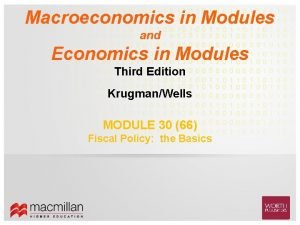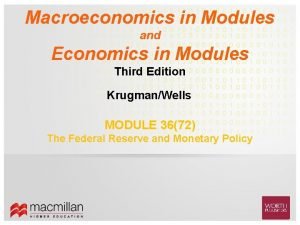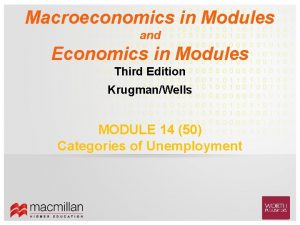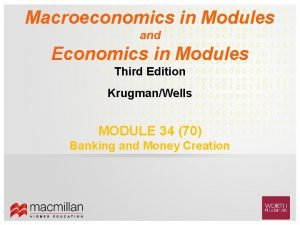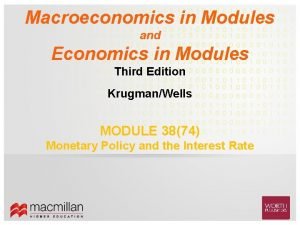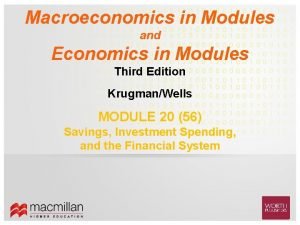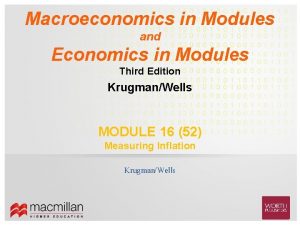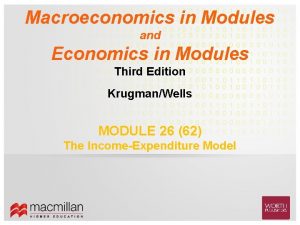Macroeconomics in Modules and Economics in Modules Third










- Slides: 10

Macroeconomics in Modules and Economics in Modules Third Edition Krugman/Wells MODULE 15 (51) The Costs of Inflation Krugman/Wells

What You Will Learn 1 The economic costs of inflation 2 How inflation creates winners and losers Why policy makers try to maintain a stable rate of inflation 3 The difference between real and nominal values of income, wages, and interest rates 4 The problems of deflation and disinflation 2

The Inflation Rate • The real wage is the wage rate divided by the price level. • Real income is income divided by the price level. • The inflation rate is the percent increase in the overall level of prices per year 2 – Price level in year 1 x 100 Inflation rate = Price level in year 1 3

Inflation and Deflation 4

Inflation and Deflation • High rates of inflation impose significant economic costs. – Shoe-leather costs are the increased costs of transactions caused by inflation. – Menu cost is the real cost of changing a listed price. – Unit-of-account costs arise from the way inflation makes money a less reliable unit of measurement. 5

Economics in Action Israel’s Experience with Inflation • In the mid-1980 s, Israel experienced a “clean” inflation. • But policy errors led to very high inflation. • The shoe-leather costs of inflation were substantial. Israelis spent a lot of time moving money in and out of bank accounts that provided high enough interest rates to offset inflation. • Businesses made efforts to minimize menu costs. For example, restaurant menus often didn’t list prices. • It was hard for Israelis to make decisions because prices changed so much and so often. 6

Winners and Losers from Inflation • Inflation changes the dollar repayment of a loan will be because the loan contract is stated in nominal terms. – The nominal interest rate is the interest rate expressed in dollar terms. – The real interest rate is the nominal interest rate minus the rate of inflation. – If inflation is higher than expected, borrowers gain at the expense of lenders. – If inflation is lower than expected, lenders gain at the expense of borrowers. 7

Inflation is Easy; Disinflation is Hard • Disinflation is the process of bringing the inflation rate down. 8

Inflation and Deflation 9

Summary 1. The rate of change of prices is important in the economy. 2. A high inflation rate imposes overall costs on the economy: shoe-leather costs, menu costs, and unit-of-account costs. 3. Inflation does not, as many assume, make everyone poorer by raising the level of prices because wages and incomes are adjusted to take into account a rising price level, leaving real wages and real income unaffected. 4. A higher-than-expected inflation rate is good for borrowers and bad for lenders. A lower-than expected inflation rate is good for lenders and bad for borrowers. 5. Disinflation is very costly, so policy makers try to prevent inflation from becoming excessive in the first place. 10
